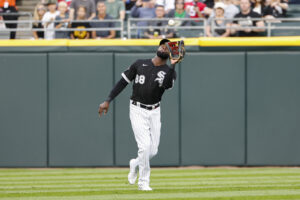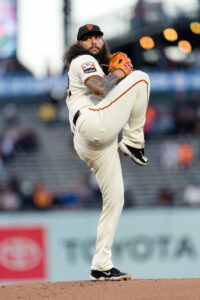The market for pure relievers has been deathly slow this winter. Since free agency opened in early November, just four full-time relievers have signed multi-year contracts this winter: right-handers Chris Stratton and Emilio Pagan signed on with the Royals and Reds, respectively, while both NPB lefty Yuki Matsui and KBO righty Woo Suk Go recently agreed to deals with the Padres. While the likes of Nick Martinez, Reynaldo Lopez, and (most recently) Sean Manaea have all signed multi-year pacts this offseason as well, each of that trio has started games in the past and figures to have at least a chance of earning a rotation spot entering Spring Training.
There’s little question who the top dog available in free agency this offseason is in terms of relief pitching. Southpaw Josh Hader has been in the conversation for best reliever in baseball practically since his debut back in 2017 and is coming off an incredible platform season where he posted a 1.28 ERA in 56 1/3 innings of work while collecting 33 saves and striking out 36.8% of batters faced. Behind him, the best available bullpen arms largely appear to be right-handed. MLBTR’s Anthony Franco recently discussed the pros and cons of two of the winter’s best righty relievers, Robert Stephenson and Jordan Hicks. What of the left-handed relief market? With Hader in a league of his own, the next tier of southpaw free agent arms features two dominant back-end veterans in their mid-thirties: Aroldis Chapman and Matt Moore.
The two could hardly have had more different career paths leading them to this point. Chapman may be the most well-recognized reliever in the game today, as the veteran fireballer made seven All Star appearances between 2012 and 2021, pitching to an incredible 2.25 ERA and 2.13 FIP in 540 1/3 innings of work and racking up 305 saves across that ten-year span while pitching for the Reds, Yankees, and Cubs. During that time, Chapman’s fastball routinely topped 100 mph and averaged 99.5 mph while maxing out at over 105 mph. That velocity made him one of the hardest-throwing pitchers in the game, particularly at the time of his debut back in 2010.
Over time, however, signs of decline became evident in Chapman’s profile. After pitching just 11 2/3 innings during the shortened 2020 season, 2021 saw the flamethrower post a career-worst 3.99 FIP thanks to a 15.6% strikeout rate that was his highest since his first full season in the majors back in 2011. While Chapman managed to pitch through those red flags to rack up 30 saves and post a solid 3.36 ERA, the wheels came off more noticeably for the left-hander during 2022, his final season in New York. Chapman posted the worst average fastball velocity of his career that season, averaging “just” 97.5 mph on his heater. His already elevated walk rate also continued to climb, reaching 17.5%. Meanwhile, his strikeout rate plummeted to just 26.9%, by far the worst of his career. Chapman’s 4.46 ERA and 4.57 FIP were also career worsts, and his career with the Yankees ended inauspiciously as he was left off the club’s ALDS roster after skipping a team workout.
Chapman’s struggles left him to sign a modest one-year deal with the Royals in free agency last winter in hopes of recouping his value. The lefty did well for himself in that regard as his average fastball velocity climbed back up to 99.1 mph, the highest it had been since his age-29 season back in 2017. With the improved velocity came renewed success, as Chapman struck out a whopping 41.4% of batters faced while posting a 3.09 ERA and 2.52 FIP in 58 1/3 innings of work for the Royals and Rangers. While Chapman’s 14.5% walk rate will surely raise some eyebrows, if he can continue striking out batters at elite rates he should be able to pitch around the additional traffic on the basepaths.
Moore, by contrast, was once considered the very top prospect in all of baseball and in the early years of his career with the Rays appeared to be a burgeoning star. Tommy John surgery in 2014 got in the way of Moore’s ascension, however, and the left-hander was never the same pitcher upon returning to the mound. He scuffled as a fringe rotation option for years, bouncing between the Rays, Giants, Rangers, and Tigers before heading to Japan during the 2020 campaign to try and revitalize his career overseas. Moore excelled with a 2.65 ERA in 85 innings for Nippon Professional Baseball’s Fukoka Softbanks Hawks in 2020 and returned stateside as a swingman for the Phillies in 2021, though he had another difficult season as he struggled to a 6.29 ERA in 73 innings of work.
That rough performance lead Moore to take a minor league contract with the Rangers, but upon converting to relief full time the lefty quickly made his way not only into the big league bullpen, but into a late-inning role with the club. In 74 innings of work across 63 relief appearances for the Rangers in 2022, Moore dominated to a 1.95 ERA with a 2.98 FIP and a 27.3% strikeout rate paired with a strong 43.9% groundball rate. Despite that dominance, Moore’s long track record of struggles prior to the 2022 campaign, his elevated 12.5% walk rate, and a minuscule 4.2% home run rate on fly balls likely caused concern among potential suitors in free agency, leaving him to settle for a one-year deal with the Angels last winter.
Fortunately for Moore, his performance in 2023 largely backed up his newfound role as a quality back-end relief arm and answered those questions regarding sustainability. Though time on the injured list limited the left-hander to just 50 appearances last year, he posted a strong 2.56 ERA and saw his strikeout rate tick up to 27.5% while his walk rate plummeted to a greatly-improved 6.9%. He found that success in spite of the fact that his groundball rate dipped to a career-low 35% and a whopping 11.3% of his fly balls left the yard for home runs last season.
Perhaps even more impressive is the fact that Moore found this success while being shuffled between three teams late in the season. The Angels placed him on waivers in August, where he was claimed by the Guardians, who then promptly waived him for a second time before he was claimed by the Marlins to contribute to their playoff push in the season’s final week. Taken together, Moore sports a sterling 2.20 ERA and 3.29 FIP in 126 2/3 innings dating back to the start of the 2022 season. That ERA is good for ninth among all relievers with at least 100 innings of work across the past two seasons, ahead of elite closers like David Bednar and Emmanuel Clase and just behind the likes of Jhoan Duran and Brusdar Graterol.
Relievers always come with risk involved, and that’s especially so for this pair of southpaws. Both players have had significant ups and downs over the past three seasons, and while each figures to fill the same late-inning bullpen role they vastly different pros and cons. Chapman has the name recognition and track record as a longtime closer, and is still capable of elite velocity as shown by his dominant performance in 2023. With that being said, 2022 showed just how far things can go off the rails for the lefty if he loses even a tick or two of that elite velocity, and his 15.6% walk rate since the start of the 2021 campaign seems unlikely to go down much at this stage of his career.
By contrast, Moore is anything but a known commodity given his rollercoaster history as a former top prospect and longtime journeyman starting pitcher who has only recently broken out as a dominant reliever. He lacks the premium velocity Chapman offers, having average 94 mph on his heater in each of the past two seasons, but has been among the very best relievers in baseball the past two seasons and has shown the ability to improve around the margins of his profile by cutting his walk rate nearly in half this past season. Also of note is that Moore, who will celebrate his 35th birthday in June, is nearly a year and a half younger than Chapman, who turns 36 next month.
Which southpaw would MLBTR readers rather have on their team in 2024? Do you feel Chapman’s lengthy track record and high-end velocity is too valuable to pass up, or do you prefer Moore’s recent dominance and stronger command?


